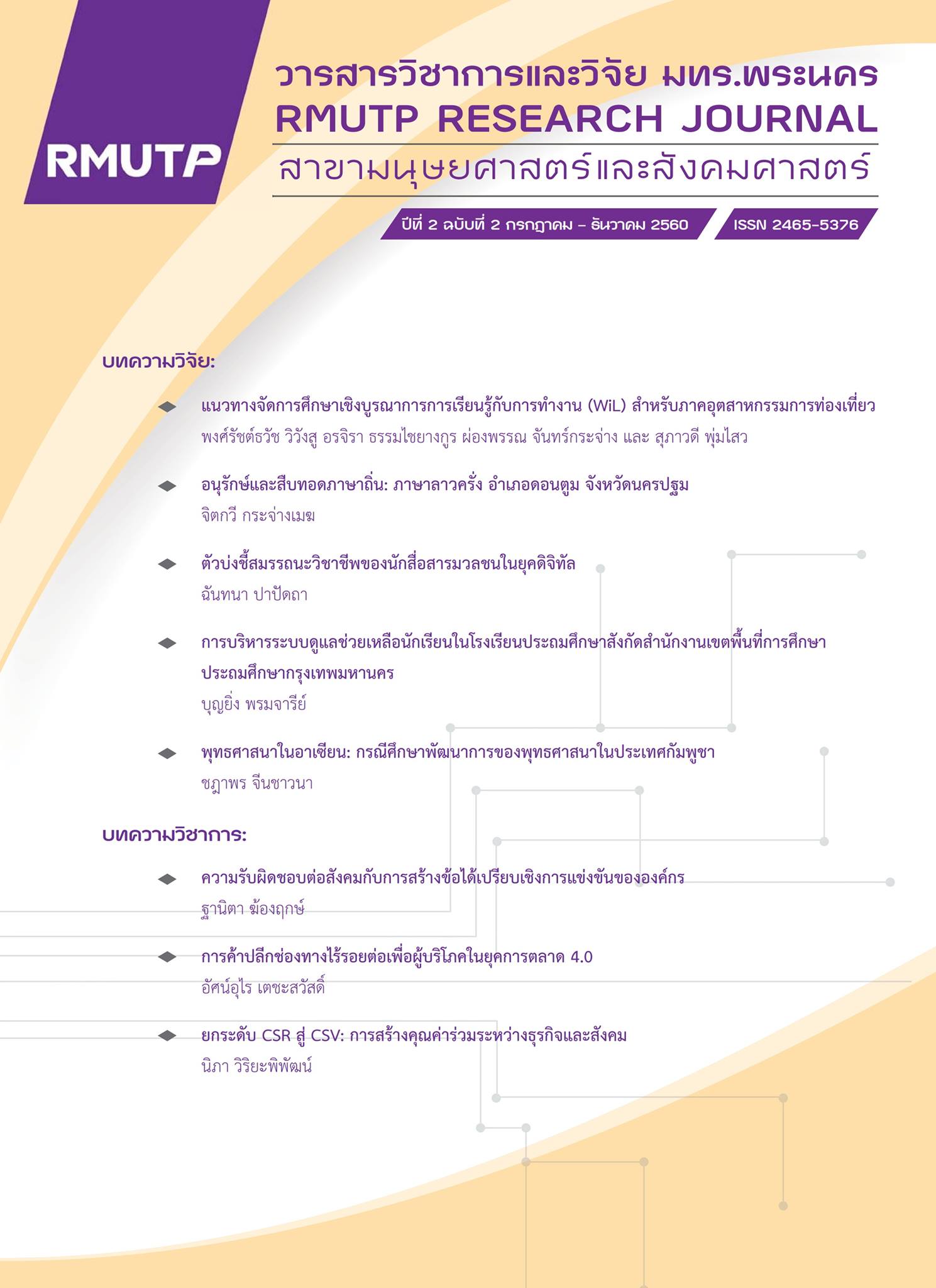Dialect Preservation and Transference : Lao Khrung Dontoom District,Nakhonpathom Province
Main Article Content
Abstract
The objectives of the study titled “ Dialect Preservation and Transference : Lao Khrung Dontoom District, Nakhonpathom Province” were 1) to study about Lao Khrung language in Dontoom, Nakon Pathom, 2) to collect the local language information and to write the manual “How to study Lao Khrurng?” for schools and other educational institutes in Dontoom, Nakhon Pathom. In addition, the project aimed 3) to conserve, inherit, and distribute Lao Khrung to remain in the society with qualitative research methodology. The scope of this research was at Ban Tung Phak Good, Dontoom, Nakhon Pathom (Lao Khrung community area). The findings showed that the local language “Lao Khrung” was similar to the voice of Laotians in Luang Pra Bang which was the original homeland of Lao Khrung people in Dontoom. The written forms or alphabets could not be found in Lao Khrung, it had only the spoken language for communication. The sounds in Lao Khrung changed in many ways such as Sound Change, Metathesis, Sound Shift, Deletion, Addition, and Assimilation. Lao Khrung language was divided into 10 types including day, time, number, animal, flower, tree, vegetable and fruit, characteristic, body, disease, relatives, occupation, cloth, decorations, and miscellaneous. The study found that Lao Khrung had different consonant sounds, tones, words, sentences, and final particles from other Laotian people who immigrated into this area at the same time. Especially, the final particles were much contrastive; they were used as a question, a request, and an affirmative sentence in the same sentence. Which type of these sentences were used depended on situation, intimate status, seniority, respect, social status, intention, mood, and context in each conversation.
Transmission, inheritance, and remaining of Lao Khrung resulted from learning from parents, grandparents and elder people from daily routine, being familiar with communication, and practicing by imitation. The findings showed that conservation and inheritance of local language should be supported, restored, preserved to study and to collect the information of local language in order to stimulate local people to realize the importance of local language; the local course should also be made. Additionally, the local scholars’ capabilities should be developed and supported to express out. Thus, the inheritance, restoration, and transmission to the next generation help preserve and remain Lao Khrung in the Lao Khrung community onwards.


